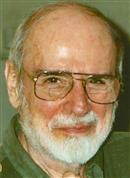
SCHOLAR OF NEAR EASTERN ARCHAEOLOGY, DR. R. THOMAS SCHAUB, DIES AT AGE 82

Contact: Helen Schaub
October 22nd, 2015
(917) 731-7143
helen.schaub@gmail.com
Dr. R. Thomas Schaub, archaeologist, co-director of the Expedition to the Dead Sea Plain in Jordan and author of numerous publications on the Expedition, died on October 19th, 2015 in Pittsburgh, Pennsylvania following a long hospitalization. He is survived by his wife, Dr. Marilyn Schaub, his daughter Helen Schaub and his daughter-in-law Dr. Reena Karani.
Schaub and his co-director Dr. Walter Rast established the Expedition to the Dead Sea Plain in order to explore a series of archaeological sites located along the southeastern shore of the Dead Sea dated to the earliest period of urbanization in the region, the late fourth through the third millennium BCE. The Early Bronze Age inhabitants of these sites buried their dead with great care in some of the largest ancient cemeteries excavated in the Levantine corridor of the Middle East , and later settled two walled towns nearby, called Bab adh-Dhra` and Numayra, that endured for many centuries. Through a series of excavations from 1975 to 1990, Schaub and Rast led a multi-disciplinary expedition team dedicated to understanding the daily life of the people who built some of the earliest fortified towns, their struggles to adapt to the environment, the form of their societies and their beliefs.
Following the excavations, Schaub and Rast synthesized their findings in Bab edh-Dhra’: Excavations in the Cemetery Directed by Paul Lapp (1989) and Bab edh-Dhra’: Excavations at the Town Site (1975–1981) (2003), both published by Eisenbrauns, as well as in scores of scholarly articles. As an early proponent and leader of multi-disciplinary archaeological research and academic collaboration, Schaub mentored many young scholars. He pioneered the use of statistical and petrographic analyses to establish Early Bronze Age pottery typologies, contributing to the establishment of the chronological foundation for urbanization in the region. His contributions to the field were honored in the 2011 volume Daily Life, Materiality and Complexity in Early Urban Communities of the Southern Levant: Papers in Honor of Walter E. Rast and R. Thomas Schaub, edited by Dr. Meredith S. Chesson. “Tom Schaub was an excellent scholar, visionary archaeologist, and a genuinely good and generous person,” said Dr. Chesson. “And that’s a combination of traits not always evidenced together in academia or archaeology as a discipline.”
The Expedition has received support from many foundations and institutions, including the National Endowment for the Humanities, National Geographic, Smithsonian Institution, American Schools for Oriental Research, the Wenner-Gren Anthropological Foundation, Harvard University’s Semitic Museum, Valparaiso University, Indiana University of Pennsylvania, Pittsburgh Theological Seminary, the British Museum, and the Shelby White- Leon Levy Program for Archaeological Publications. Material from the Expedition continues to be published in an effort led by Dr. Chesson at the University of Notre Dame, and is included in a smaller project called Follow the Pots, co-directed by Chesson and Dr. Morag M. Kersel at Depaul University, that documents looting of the Early Bronze Age cemeteries in the region investigated by Schaub and Rast and the illegal sale of these stolen objects on antiquities markets globally. Schaub was working with Chesson until recently to finalize a volume describing the results of the excavations from the town site of Numayra, which is contracted to be published by Eisenbrauns.
In the modern era, the ruins of Bab adh-Dhra’ and Numayra have been identified with the ill-fated sites of Sodom and Gomorrah described in the Bible. Schaub dedicated his professional life to scientific investigation of these sites and consideration of their relationship to the Biblical stories. He gave his time freely to television and documentary producers to explore these topics and appeared on episodes of “Mysteries of the Bible,” which aired on A&E in 1994, and “Digging for the Truth,” which aired on the History Channel in 2006.
While Schaub’s professional career as an academic might have suggested a sedate, quiet lifestyle, his life was filled with extraordinary moments. In 1974 he and his young family were participating in an archaeological dig in Cyprus during the Turkish invasion of the isald and had to be rescued by American aircraft carriers from a beach. Schaub was the last to board the helicopter to the ship when all the seats and seatbelts had been taken and hung on to a strap next to the open door during the journey. He often recounted another story of aerial derring-do, when he accompanied an over-enthusiastic former RAF pilot over the Southeastern Dead Sea Plain to take aerial photographs of the archaeological sites, with the plane swooping dangerously close to workers and goats on the ground.
Schaub was born in South Bend, Indiana and attended the University of Notre Dame and the Massachusetts Institute of Technology before joining the Dominican religious order in 1953. While a priest, he received a Master of Theology from the Aquinas Institute of Theology in St. Louis and then began scriptural studies at the Ecole Biblique in Jerusalem. At the Ecole, an invitation from Dr. Paul Lapp to join an early expedition to Bab adh-Dhra` changed Schaub’s life in two ways. It sparked an abiding passion for archaeology and introduced him to his future wife, Marilyn McNamara, who was then also in the Dominican religious order. He completed his Ph.D. in Archaeology in 1973 at the University of Pittsburgh and later joined the faculty of the Indiana University of Pennsylvania where he served as Professor and taught in the Department of Religious Studies until his retirement in 1999. After retirement he continued analyzing and publishing his findings from the Expedition’s research endeavors, returned to the site of Numayra in 2004 for a final surveying season, and attended scholarly conferences regularly to communicate his findings.